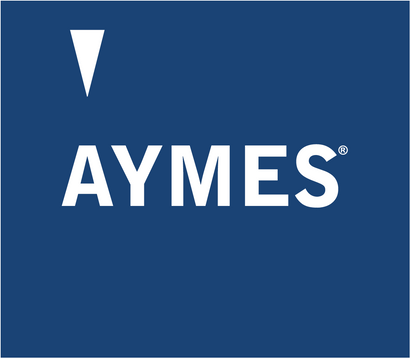Introduction
Oral Nutritional Supplements (ONS) are a useful strategy in the management of disease-related malnutrition, but they are only effective if consumed.¹ ² ³ A recent study found that 64% of patients didn’t comply with their ONS prescription.⁴ Poor compliance to ONS can be attributed to a variety of factors including ONS specific features such as flavour, palatability, texture, variety, volume, and energy density.⁵ ⁶ ⁷ Individual patient factors such as reduced taste or smell function, dysphagia, and gastrointestinal symptoms also influence compliance.⁸⁻¹¹ Additionally, prolonged and repeated consumption of ONS, is known to cause taste fatigue; contributing to lower compliance rates.¹²⁻¹⁵
Patient preference plays an important role in ONS compliance.¹⁶ ¹⁷ For example, some studies have reported poor compliance to standard (milkshake style) ONS due to patients’ dislike of milky drinks, the thickness, mouth-feel, and available flavours. ¹⁸⁻²⁰
Offering a variety of forms and styles of ONS, such as juice-style ONS, in different flavours, may help to combat personal dislike, boredom and taste fatigue, ultimately improving ONS compliance. This article introduces our new high energy juice-style ONS and suggests a number of innovative ways to offer this fresh alternative to patients, especially in the summer months.
Switching without compromise
A recent survey examining ONS prescribing experiences of thirteen Dietitians revealed that the Dietitians thought that switching to a juice-style ONS compromised the nutritional value of an ONS regimen.²¹
It is important to correct this misimpression. Choosing a juice-style ONS can offer a useful and refreshing alternative to milkshake style ONS with minimal nutritional compromise. AYMES’ Actagain Juce has comparable nutritional profiles for protein and energy; when compared with standard milkshake style ready-to-drink (RTD) ONS (see figure 1).
Introducing Actagain Juce
AYMES Actagain Juce is a refreshing new, high-energy juice-style ONS, designed especially for patients who dislike milky drinks or prefer a more refreshing taste. ActagainJuce is available in5flavours (Juicy Apple, Zesty Orange, Berry Medley, Exotic Fruit)and Juicy Peach.ActagainJuceis also a useful choice for patients experiencing taste fatigue, taste changes, (due to medication and/or treatment), and for those who would benefit from a fat-free ONS. Patients can switch from a standard ready-to-drink (RTD) milkshake style ONS product to AYMES Actagain Juce with minimal impact on their protein intake – this is not always the case for other RTD juice-style ONS (see figure 1).
Key facts about AYMES Actagain Juce:
- Contains the highest amount of protein (11g/200ml bottle) when compared with other available juice-style ONS – meaning minimal impact on protein intake when switching from standard RTD milkshake style ONS (see figure 1).²²
- Is the most cost-effective juice-style ONS (per gram of protein) at just £1.80 per 200ml serving (see figure 2). ²³
-
Provides the 10μg daily Vitamin D requirements just 2 servings (DoH recommendations for adults and children over 4 years of age). ²4
-
Scores high withtaste; in a recent study,93% of participants ratedActagainJuce as acceptable for palatability (e.g., taste,consistency andappearance).²5
-
Our Tetra Pak cartonscontain63% plant-based material and use 4x less plastic. ²6, ²7
Figure 1: ONS Nutrient Composition Comparison (200ml)
| |
Market Leading Juice (apple/orange) |
AYMES Actagain Juce (apple/orange) |
Standard RTD (milk-based) |
| Energy (kcal) |
300 |
300 |
300 |
| Protein (g) |
8 |
10 |
12 |
| Fat (g) |
0 |
0 |
11.6 |
Figure 2: AYMES Actagain Juce: summary features (200ml carton)
| Energy |
Protein |
kcal/ml |
Cost |
| 300Kcal |
11g |
1.5 |
£1.80 |
Innovative ways to use Actagain Juce during summer months
There are plenty of interesting and innovative ways to serve Actagain Juce. Summer is a particularly good time to enjoy Actagain Juce and to experiment with different serving options. Serving drinks at different temperatures can be a simple way to mix things up and improve compliance. Patients often report preferring chilled ONS to room temperature ONS.²⁴
Innovative ways to enjoy AYMES Actagain juce include:
- Serving chilled with ice. Add a lemon or lime wedge.
- Freezing into ice lollies, slush drinks, or ice cubes to add to favourite drinks.
- Mixing into home-made smoothies.
- Making into jellies for a light and fresh dessert.
- Using it as a base for a refreshing sorbet.
- Adding to cold drinks (i.e. lemonade, soda water) to make into a long drink to enjoy on a summer’s evening.
- Using Actagain Juce as a base for a refreshing mocktail.
|
Conclusion
ONS are an effective way of managing disease-related malnutrition when taken as prescribed. ONS compliance can be poor due to a number of factors such as patient preference, sensory experiences, and taste fatigue.
Strategies to improve ONS compliance include offering a variety of different types of ONS (formats and flavours). Choosing a juice-style ONS can offer a useful and refreshing alternative to RTD milkshake style ONS with minimal nutritional compromise. AYMES Actagain Juce contains the highest amount of protein (11g/ 200ml bottle) when compared with other available juice-style ONS products and can be served in a variety of interesting and innovative ways, to help improve compliance.
- ◄References:
-
- Elia M, et al. A systematic review of the cost and cost effectiveness of using standard oral nutritional supplements in community and care home settings. Clin Nutr [Internet]. 2016;35(1):125–37. Available from: http://dx.doi.org/10.1016/j.clnu.2015.07.012
- Smith TR, et al. Ready-made oral nutritional supplements improve nutritional outcomes and reduce health care use—a randomised trial in older malnourished people in primary care. Nutrients. 2020;12(2):1–17.
- Seguy D, et al. Compliance to oral nutritional supplementation decreases the risk of hospitalisation in malnourished older adults without extra health care cost: Prospective observational cohort study. Clin Nutr. 2020;39(6):1900–7.
- Lidoriki I, et al. Oral Nutritional Supplementation Following Upper Gastrointestinal Cancer Surgery: A Prospective Analysis Exploring Potential Barriers to Compliance. J Am Coll Nutr [Internet]. 2020;0(0):1–7. Available from: https://doi.org/10.1080/07315724.2020.1723453
- Özçaǧli TG, Stelling J, Stanford J. A study in four European countries to examine the importance of sensory attributes of oral nutritional supplements on preference and likelihood of compliance. Turkish J Gastroenterol. 2013;24(3):266–72.
- Ruxton C. Compliance with Oral Nutritional Supplements and the Role of Taste. 2014;6(2):43–5.
- Hubbard GP, Elia M, Holdoway A, Stratton RJ. A systematic review of compliance to oral nutritional supplements. Clin Nutr [Internet]. 2012;31(3):293–312. Available from: http://dx.doi.org/10.1016/j.clnu.2011.11.020.
- Risso D, Drayna D, Morini G (2020). Alteration, reduction and taste loss: Main causes and potential implications on dietary habits. Nutrients; 12(11): 1-16.
- IJpma I, et al. (2016). The palatability of oral nutritional supplements: before, during, and after chemotherapy. Support Care Cancer.; 24(10): 4301-4308.
- Zabernigg A, et al. (2010). Taste Alterations in Cancer Patients Receiving Chemotherapy: A Neglected Side Effect? Oncologist; 15(8): 913-920.
- Belqaid K, et al. (2018). Dealing with taste and smell alterations - A qualitative interview study of people treated for lung cancer. PLoS ONE; 13(1): e0191117.
- Enríquez-Fernández BE, et al. Sensory preferences of supplemented food products among cancer patients: a systematic review. Support Care Cancer. 2019;27(2):333–49.
- Nieuwenhuizen WF, et al. Older adults and patients in need of nutritional support: Review of current treatment options and factors influencing nutritional intake. Clin Nutr [Internet]. 2010;29(2):160–9. Available from: http://dx.doi.org/10.1016/j.clnu.2009.09.003
- Rahemtulla Z, et al. The palatability of milk-based and non-milk-based nutritional supplements in gastrointestinal cancer and the effect of chemotherapy. Clin Nutr. 2005;24(6):1029–37.
- Galaniha LT, McClements DJ, Nolden A. Opportunities to improve oral nutritional supplements for managing malnutrition in cancer patients: A food design approach. Trends Food Sci Technol. 2020;102(May):254–60.
- Norris E, Shelton F, Hetherington MM. Nutrition screening of older adults living in care homes. e-SPEN [Internet]. 2011;6(3):e106–8. Available from: http://dx.doi.org/10.1016/j.eclnm.2011.04.002
- Stratton RJ, Elia M. Encouraging appropriate, evidence‐based use of oral nutritional supplements. Proc Nutr Soc. 2010;69:477–87.
- Rozenberg S, et al. Effects of Dairy Products Consumption on Health: Benefits and Beliefs—A Commentary from the Belgian Bone Club and the European Society for Clinical and Economic Aspects of Osteoporosis, Osteoarthritis and Musculoskeletal Diseases. Calcif Tissue Int 98, 1–17 (2016).
- den Boer A, Boesveldt S, Lawlor J Ben. How sweetness intensity and thickness of an oral nutritional supplement affects intake and satiety. Food Qual Prefer [Internet]. 2019;71:406–14. Available from: https://doi.org/10.1016/j.foodqual.2018.08.009
- Hogan SE, Solomon MJ, Carey SK. Exploring reasons behind patient compliance with nutrition supplements before pelvic exenteration surgery. Support Care Cancer. 2019;27(5):1853–60.
- Liljeberg E, et al. (2021). A qualitative exploration of dietitians’ experiences of prescribing oral nutritional supplements to patients with malnutrition: A focus on shared tailoring and behaviour change support. J Hum Nutr Diet.; doi: 10.1111/jhn.12867 (Online ahead of print) 22.MIMS May 2021
-
Comparison based on MIMS data (accessed Jan 2024):ActagainJuce; 5g protein/100ml, Ensure PlusJuce; 4.8g protein/100ml,FresubinJucy; 4g protein/100ml,Fortijuce; 3.9g protein/100ml,Altrajuce; 3.9g protein/100ml.
-
(MIMS;February,2024)
-
Provides 10μg in 2 servings which meetsDoH recommendations for adults and children over 4 years of age. The Scientific AdvisoryCommittee on Nutrition (SACN) recommendations on vitamin D;December, 2023.
- AYMES Data on File - AYMESActagainJuce Acceptability and tolerance study.February, 2024.
- Data on file; Tetra Pak Packaging for AYMES presentation;October, 2023.
- Comparison based on AYMES data on file; Tetra Pak. Tetra Pak Packaging for AYMES presentation (accessed January 2024):Compared to HDPE bottle weighing 20g
- Methven, L, et al. (2009). Can changing the serving temperature improve the palatability of oral nutritional supplements in older consumers? Proceedings of the Nutrition Society, 68(OCE1), E37. doi:10.1017/S0029665109001785


